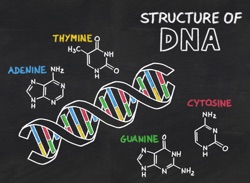 Several years ago, I had the opportunity to shop a concept for an interactive eBook around. While the project failed to overwhelm the reviewers, I learned something very interesting about why textbooks are so huge. There was essentially universal agreement among instructors that we’re killing ourselves and our students by trying to ‘cover’ a field that has become so vast and simultaneously so deep. So why don’t authors just roll up sleeves and set to work slimming content down? Because textbook sellers must… sell textbooks. If a given text doesn’t offer your favorite experiment, or the thing I love most about plants, or the detail that she thinks is the essence of electron transport then our business goes elsewhere. To be profitable, then, a textbook must be all things to all people–the union of all relevant teaching sets. So we’re all doomed :-). Since I’m currently not successfully selling anything to anybody, I’m free to share my thoughts…
Several years ago, I had the opportunity to shop a concept for an interactive eBook around. While the project failed to overwhelm the reviewers, I learned something very interesting about why textbooks are so huge. There was essentially universal agreement among instructors that we’re killing ourselves and our students by trying to ‘cover’ a field that has become so vast and simultaneously so deep. So why don’t authors just roll up sleeves and set to work slimming content down? Because textbook sellers must… sell textbooks. If a given text doesn’t offer your favorite experiment, or the thing I love most about plants, or the detail that she thinks is the essence of electron transport then our business goes elsewhere. To be profitable, then, a textbook must be all things to all people–the union of all relevant teaching sets. So we’re all doomed :-). Since I’m currently not successfully selling anything to anybody, I’m free to share my thoughts…
Molecular Biology of the Cell: Greatest Gen Bio text?
Alas, I phrased that carefully, as I’m not sure it’s the greatest INTRO bio general text, which is my focus. It has a very mechanistic/molecular bent, which aligns it perfectly with my bias. In truth, this post is as much about sharing it as a resource, as it is more-or-less free on line (more info below) and is accompanied by wonderful video tutorials that are also accessible. I’m referring to the textbook here, not the journal. The last (5th, 2008) edition is by Bruce Alberts, Alexander Johnson, Julian Lewis, Martin Raff, Keith Roberts, and Peter Walters. Henceforth, I’ll just refer to it as “MBOC” or MBOC textbook…
Protein trafficking: How did this get here?
 Cell biology can be a challenging aspect of Introductory Biology. It’s visually fascinating, the techniques are now incredibly diverse and powerful… but the usual issue arises: what are the concepts that we ought to be teaching? The topics include organelles, transport, membranes, compartmentalization… but why? I think that protein trafficking draws together many of these fundamental facts in the context of engaging students in questions and wonder. I also propose a framework for turning a potentially dry listing of facts and names-of-parts into a journey of exploration where students ‘accidentally’ learn techniques, organelle roles, and scientific community.
Cell biology can be a challenging aspect of Introductory Biology. It’s visually fascinating, the techniques are now incredibly diverse and powerful… but the usual issue arises: what are the concepts that we ought to be teaching? The topics include organelles, transport, membranes, compartmentalization… but why? I think that protein trafficking draws together many of these fundamental facts in the context of engaging students in questions and wonder. I also propose a framework for turning a potentially dry listing of facts and names-of-parts into a journey of exploration where students ‘accidentally’ learn techniques, organelle roles, and scientific community.
Visible thinking: logic diagrams as science student tasks
I have been frustrated with challenges associated with sloppy student thinking on the one hand and the challenge of detecting/understanding student logic in verbal work on the other. I think the challenge is twofold: part is in finding ways to help them organize their thoughts (and create/detect organization); part is driving a ‘common language’ where the structure of their ideas stands out from the word-swamp that a lab report or textual description can be. In several classes, colleagues and I have used ‘logic diagrams’ and after climbing the learning curve, I think we see students achieving mastery resulting in better thinking, more insightful and well-organized final products, and quicker, easier grading–that directly addresses (our) assignment goals. Disclaimer: personal story, examples & perceptions, not studies, follow.
Teaching basepairing: consequences, applications
 Everyone teaches something about basepairing in Introductory Biology, but sometimes it’s just in passing, with no greater emphasis than the diversity of sugar variants receives. But basepairing is the wellspring of life itself and lies at the heart of each of the major informational transactions (DNA replication, transcription, translation) as well as a diversity of more recently-discovered processes in regulation. More and more, we’re also seeing it as the great keystone of new therapies. What are the core concepts and how can we teach basepairing in order to showcase all of these aspects?
Everyone teaches something about basepairing in Introductory Biology, but sometimes it’s just in passing, with no greater emphasis than the diversity of sugar variants receives. But basepairing is the wellspring of life itself and lies at the heart of each of the major informational transactions (DNA replication, transcription, translation) as well as a diversity of more recently-discovered processes in regulation. More and more, we’re also seeing it as the great keystone of new therapies. What are the core concepts and how can we teach basepairing in order to showcase all of these aspects?
Biological timers GTPases in translation, microtubules, signals
The main point in teaching with themes is to give students a meaningful sense of familiarity so that their travels from topic to topic are visits with friends and known quantities rather than onslaughts of fresh vocabulary and new un-anchored idea-pieces. One triplet that I have enjoyed using in introductory biology is the set combining 1) EF-Tu and its role in promoting accuracy in translation, 2) the GTPase timer in tubular that gives rise to the grow-catastrophe-disassemble cycle in microtubules, and 3) the ‘self shut-off’ timer features of many G-protein coupled receptors. These are evolutionarily related machines and each applies the concept of ‘timing’ to a different biological circumstance. Thus, besides providing three examples of how biological machines solve problems, this theme ties in to previous ones on ATPase (GTPase mechanism is identical; the attached base has nothing to do with catalysis) and evolution through duplication and modification.


